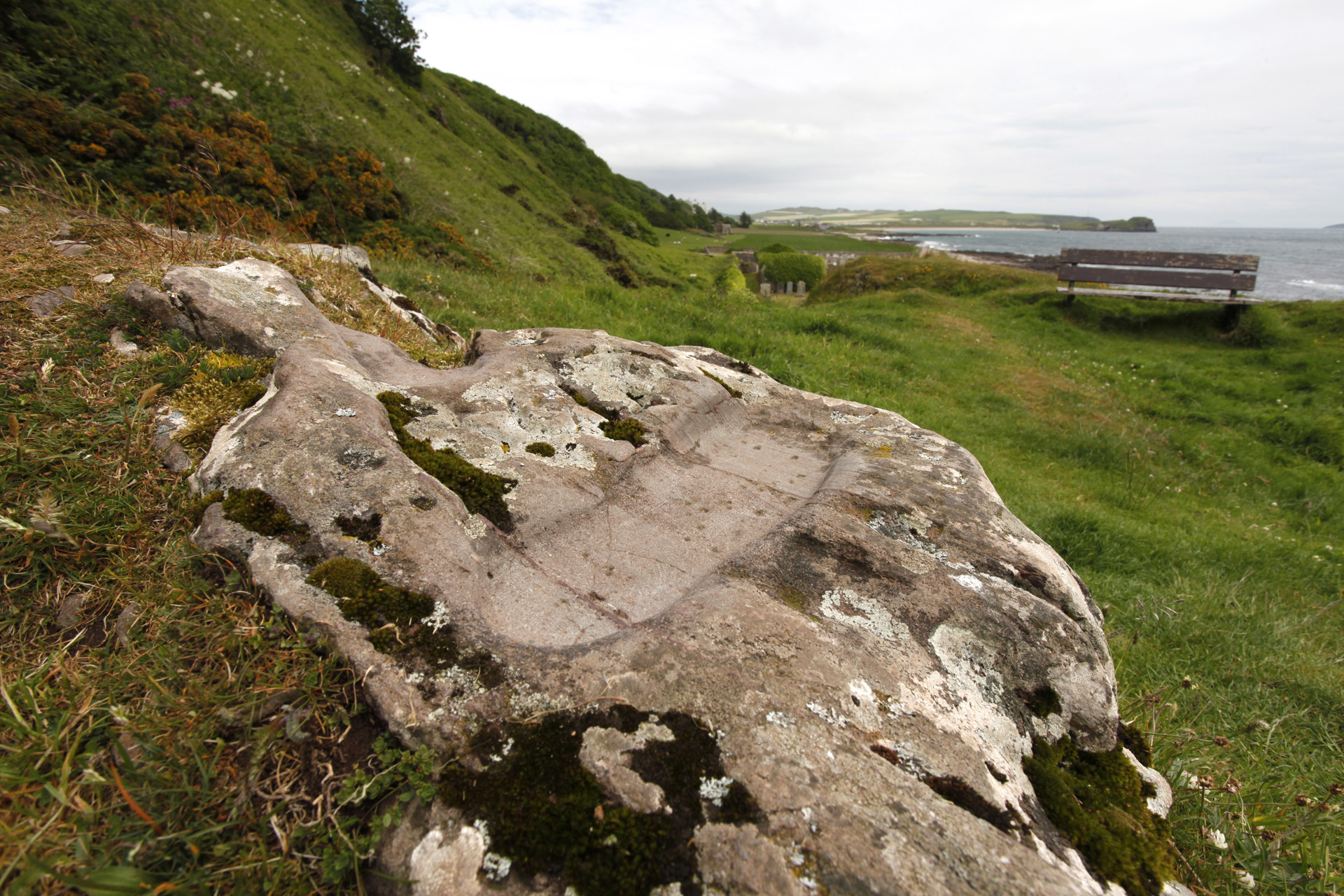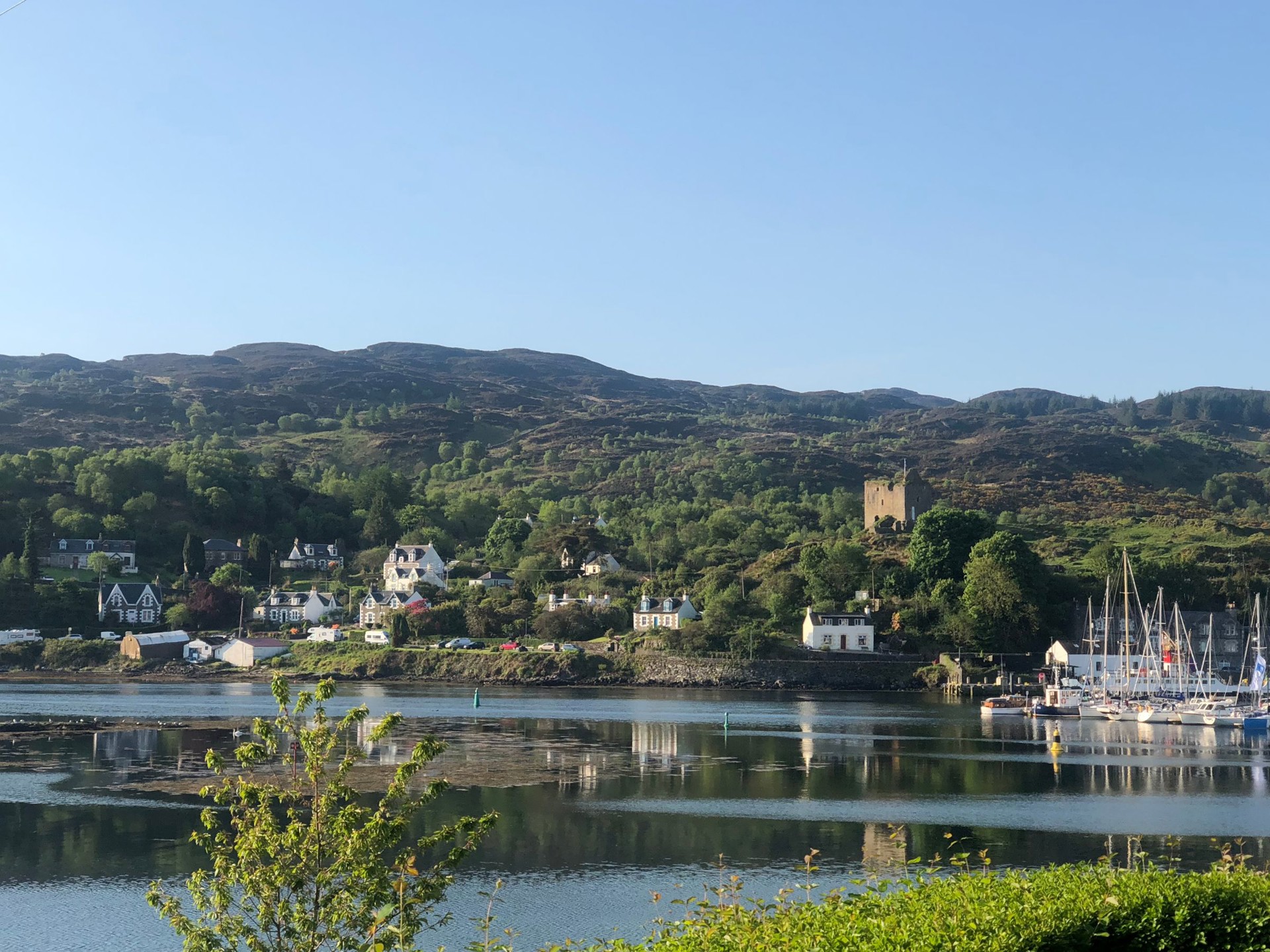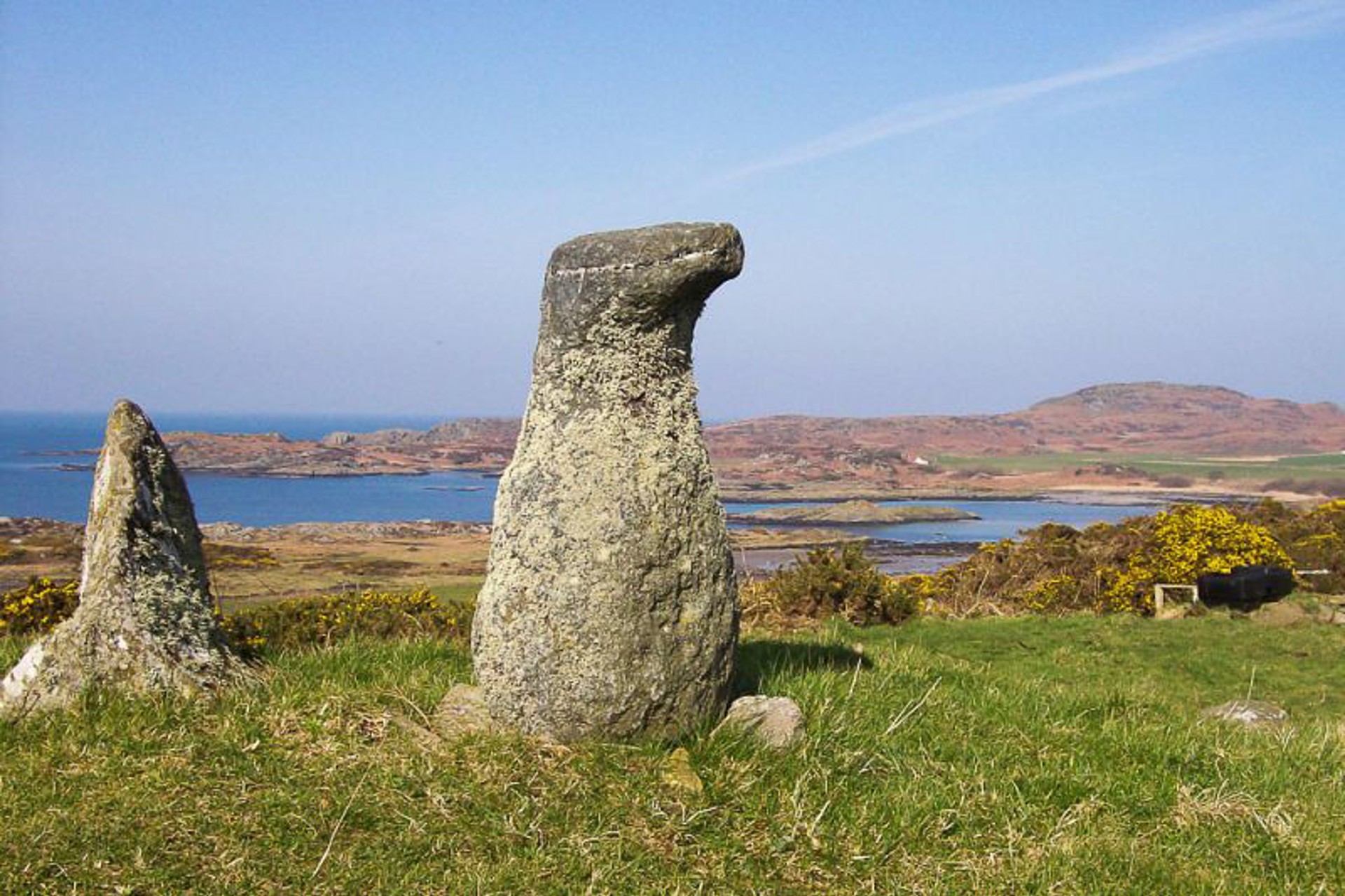Make a Pilgrimage to South Kintyre and Sanda Island
Saint Columba’s Footprints and Monks Well
This site near the village of Southend is where Saint Columba first set foot in Scotland, a rocky outcrop overlooking the ruins and graveyard of the Medieval Church of Colm Keil – ‘Dove of the Church.’
This ancient site is just 11 miles from the Antrim Coast of Northern Ireland, a place recorded in history as so close he could still see his homeland. Of course, it stimulated a mission to convert the wider reaches of Alba, a crusade he later launched from the Holy Isle of Iona.
The footprints are two-fold, with the one furthest from the sea being the efforts of an early Christian zealot. However, the one nearest the sea is truly ancient, as it is the fealty footprint of the ancient Celtic / Pictish kindred chiefs, a swearing in place where the foot was placed in a rock filled with soil of the homeland, and allegiance given to the land and its people.
The Monks well lies immediately below this sacred place, a place that silently tells of ancient Pagan ritual and Christian baptism.
Columba, a prince of Donegal, had chosen the perfect place to convey his Christian message.
Discover the Walk Highlands Route >
Discover more about the footprint >
- Where Columba first set foot on Scotland
- Southend between Kiel Cave and St Columbas Chapel (which is now a ruin)
- Approx. 12 miles from the Antrim Coast where St Columba set off on his pilgrimage
- Two footprints - the one nearest the sea is truly ancient. The second was carved in 185 by a stonemason
Keil Caves, Southend
While in the vicinity of Keil, Southend, you can visit Keil Caves only a few yards from the Footprints. It is here that Saint Columba and his retinue sheltered from the storm, and in later times became a place of domicile for the outlawed, poor and destitute of Kintyre and further afield.
St Ninian’s Chapel on Sanda Island
Photograph taken from remains of St Ninian’s Chapel looking towards the island’s harbour.
St Ninian's Chapel stands within a burial-enclosure on the N shore of the island of Sanda. The chapel is included in Fordun's list of ecclesiastical foundations in the Western Isles, compiled at some time during the second half of the 14th century, the dedication being ascribed variously to St Sennan, St Ninian and St Adamnan.
The site is early Christian and has a number of Funerary monuments related to this era. An upright slab close to the North-western corner is engraved with a Latin wheel-headed cross in low relief. The East face of the slab is heavily worn but has traces of long-stemmed cross and boss pattern. A funerary slab lies on the floor of the chapel which commemorates the family of Archibald Mor Macdonald, the same who was executed at the Massacre of Dunaverty in 1647.



